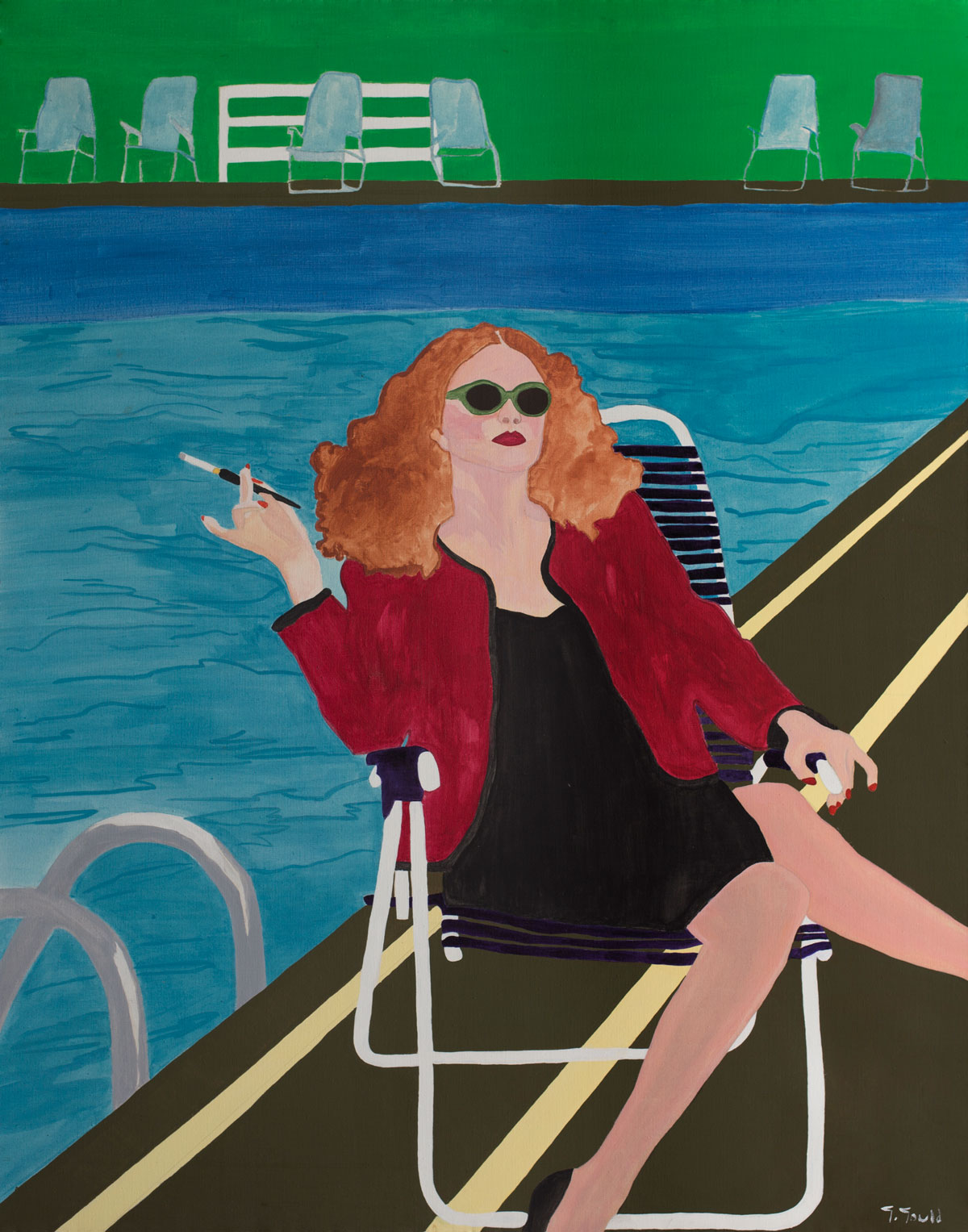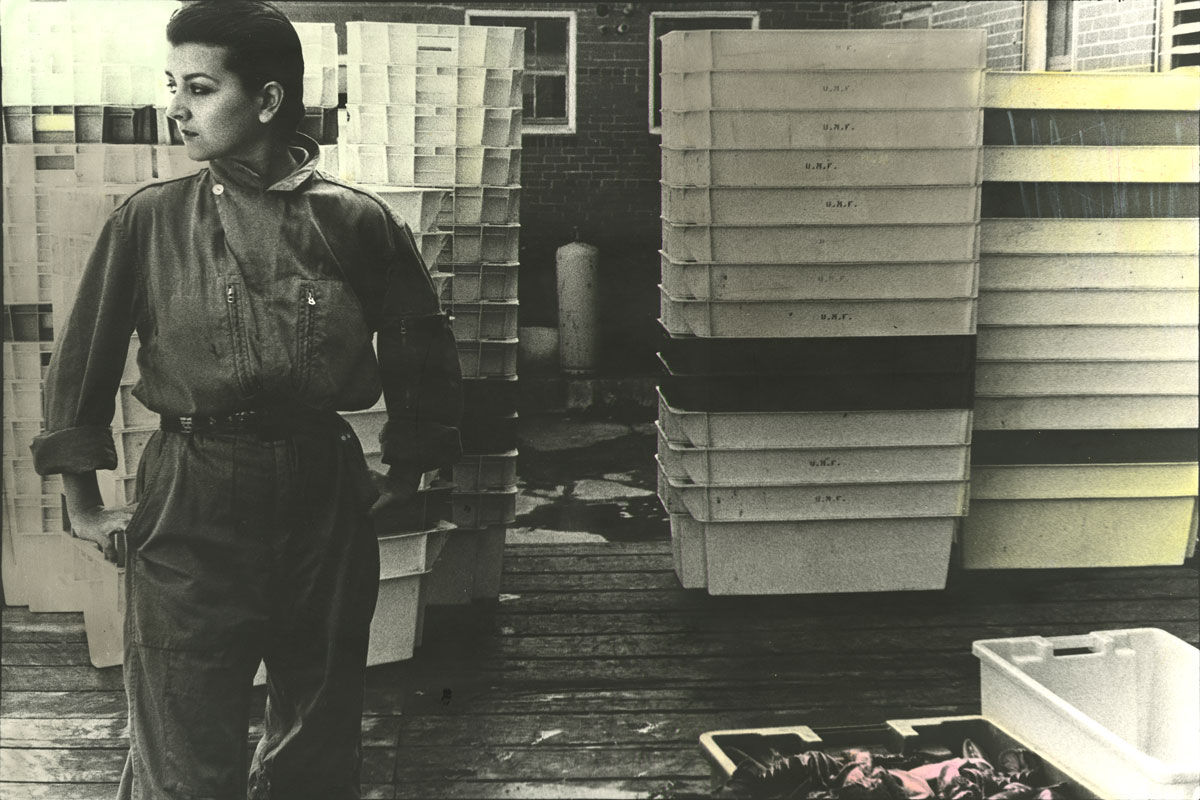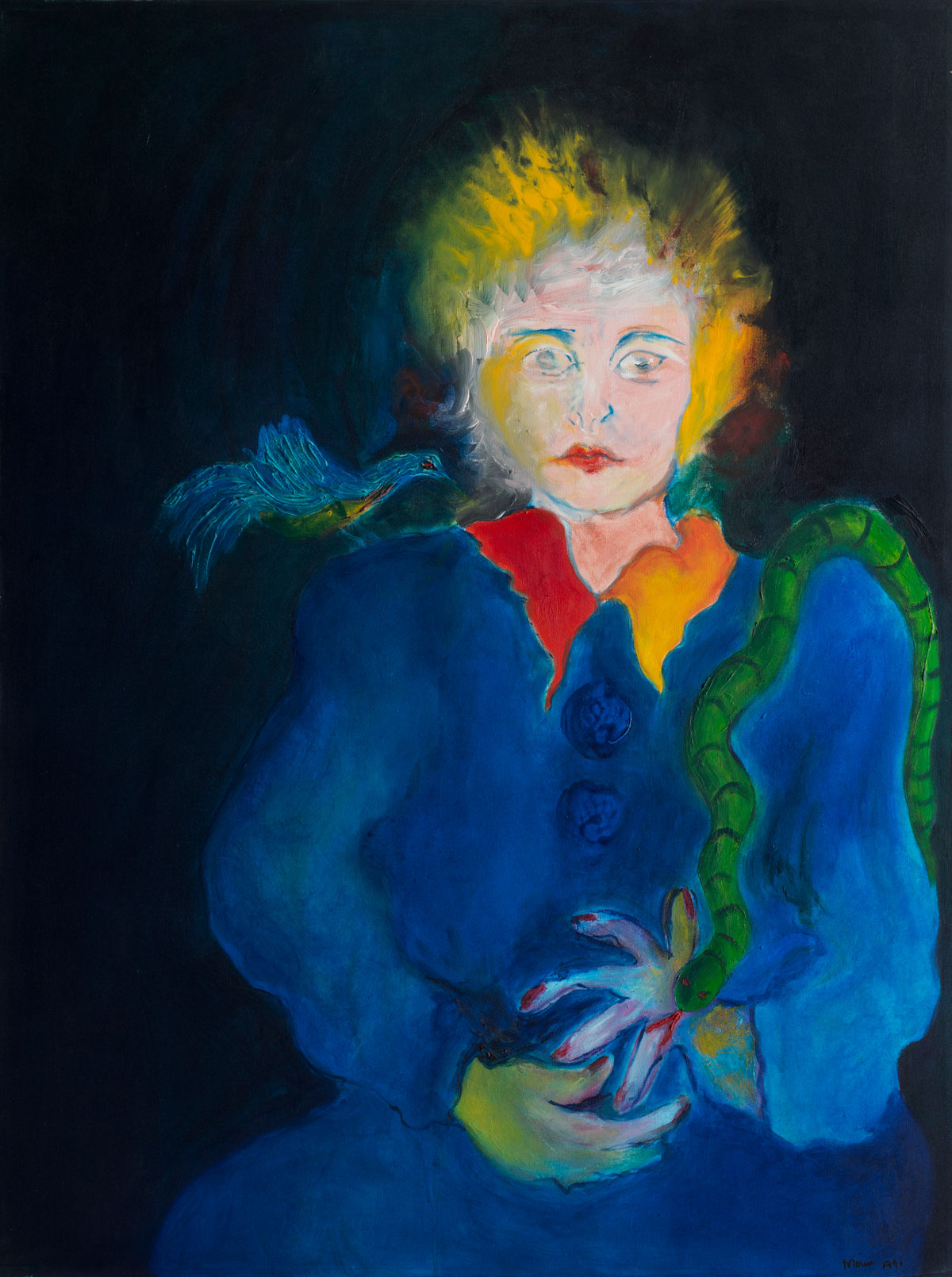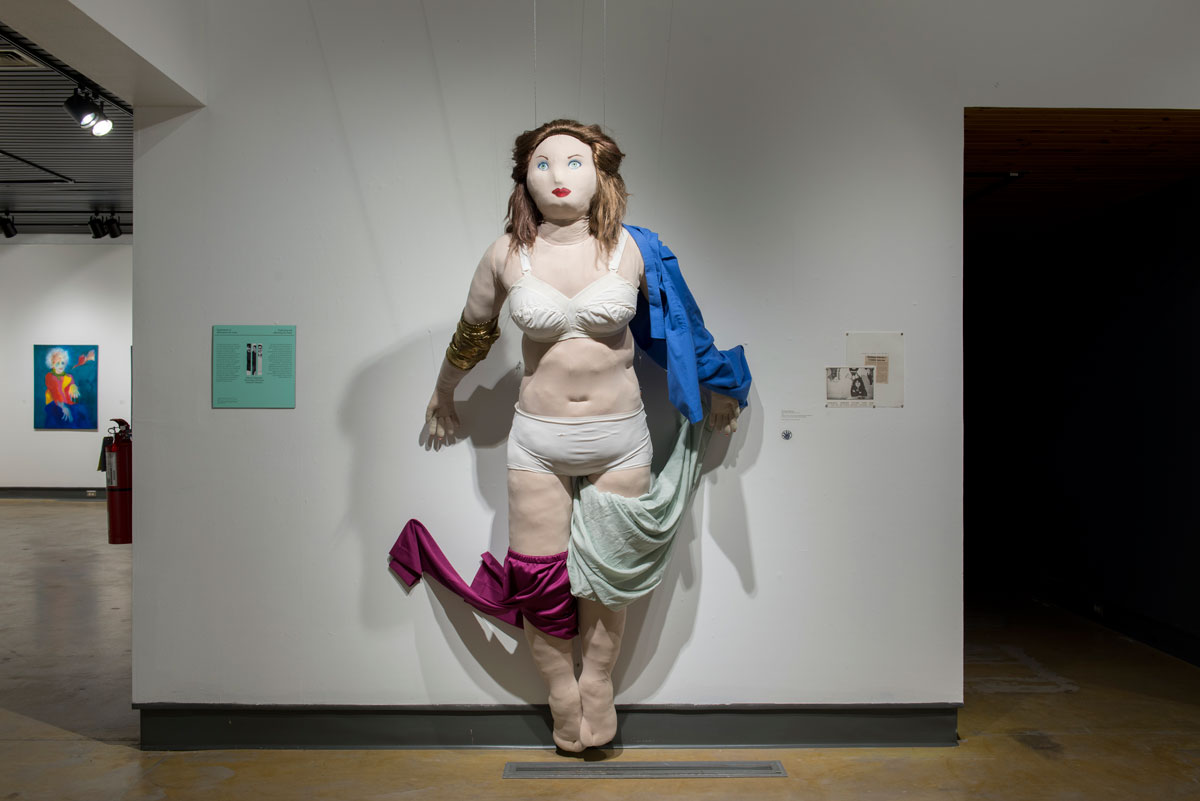Two years ago, curator Elise Anne LaPlante began a research residency at the Galerie d’art Louise-et-Reuben-Cohen in Moncton. This past fall, the results went on view in an exhibition, “Tombées dans les Interstices: A Contemporary Look at the Contribution of a Few Women Artists to Modern-day Acadie,” that prompted viewers to pay careful attention to nine women artists whose work could transform contemporary Acadian art and cultural identity.
LaPlante didn’t attempt to write a parallel history of women artists, but instead actively questioned how and why these women were excluded, and considered who else might be left out.
In a dedicated reading space, outfitted with furniture and paraphernalia from the 1960s and 1970s, reading-club sessions and film screenings were presented in collaboration with le Regroupement féministe du Nouveau-Brunswick throughout the exhibition’s run. Abstract paintings and architectural sculptures created by Géraldine Cormier and Yvette Bisson during this era sat alongside the room’s period furnishings, relating them to a broader material context.
In a screening room, Natalie Morin’s Le quatrième chevalier de l’apocalypse (2016) played on loop. Morin’s body in this film moves erratically, perhaps dancing, with her face covered. She’s on a section of wooden walkway near the edges of the Petitcodiac River.
 Ginette Gould, Femme à la piscine, 1979. Acrylic on canvas, 124 x 96 cm. Collection of the Galerie d’art Louise-et-Reuben-Cohen. Photo : Jim Dupuis.
Ginette Gould, Femme à la piscine, 1979. Acrylic on canvas, 124 x 96 cm. Collection of the Galerie d’art Louise-et-Reuben-Cohen. Photo : Jim Dupuis.
Accompanying this footage, LaPlante edited together audio from interviews with around 30 artists working in Acadie through different generations. An unidentified voice ruminates: “Oui je suis féministe, mais c’est un gros mot mal compris.” (“Yes, I am a feminist, but that’s a big word and one which is largely misunderstood.”)
Collections of portraits, wherein the artists look upon themselves and their intimate friendships, were also on view in the gallery. There were small photographs by Magda Mujica, distorted with gestures and light; paintings by Nancy Morin, charged with colour and mysticism; and works parading the opaque performance of women’s fashion by Ginette Gould.
Other works were preoccupied with the experience of female bodies: performance documentation and video by Suzanne Valotaire, the many tactile iterations of Dominique Ambroise’s projected persona Désirée Bienvenue, and photographs of Yolande Desjardins’s textile sculptures.
Walking through the exhibition reminded me that what we make space for in our lives is deeply political, and potentially transformative. In recuperating the stories of these artists, this exhibition set a precedent for other kinds of artists to exist, in Acadie and elsewhere.
This post is adapted from a review in the Winter 2018 issue of Canadian Art, which is themed on “Care and Wellness.” To get every issue of our magazine delivered to you before it hits newsstands, visit canadianart.ca/subscribe.
 Ginette Gould, Joy a l’usine de poisson #1, 1980.
Ginette Gould, Joy a l’usine de poisson #1, 1980.
 A painting by Nancy Morin.
A painting by Nancy Morin.
 Dominique Ambroise, La névrose de Désirée Bienvenue no. 24, 1979. Textile sculpture.
Dominique Ambroise, La névrose de Désirée Bienvenue no. 24, 1979. Textile sculpture.









